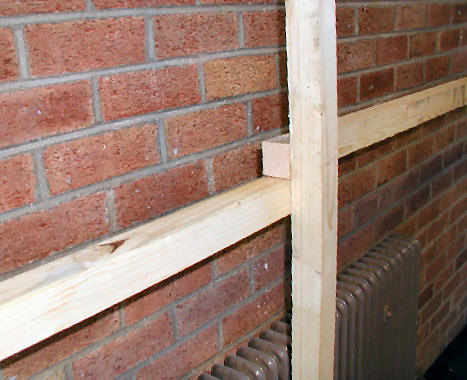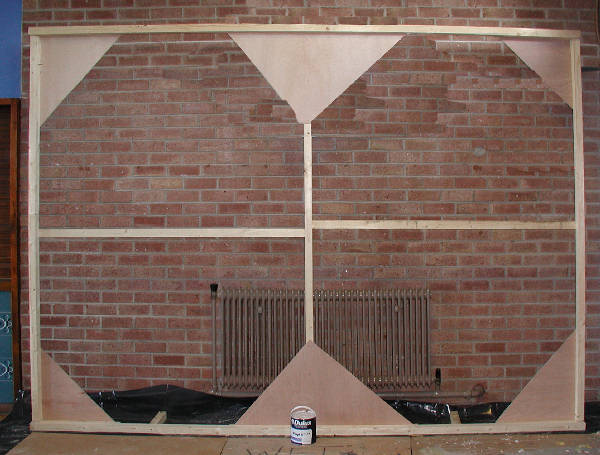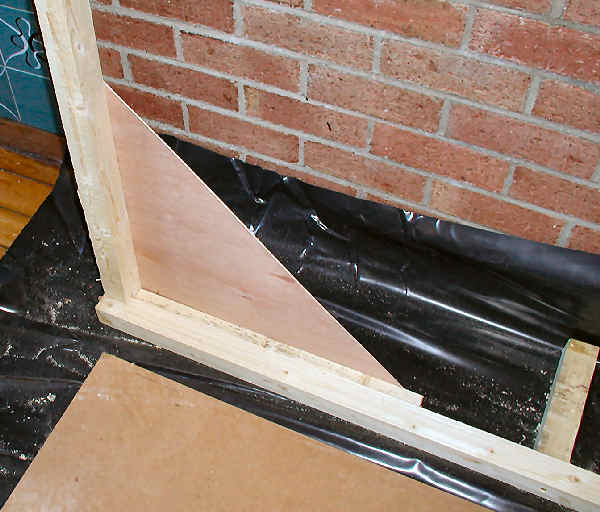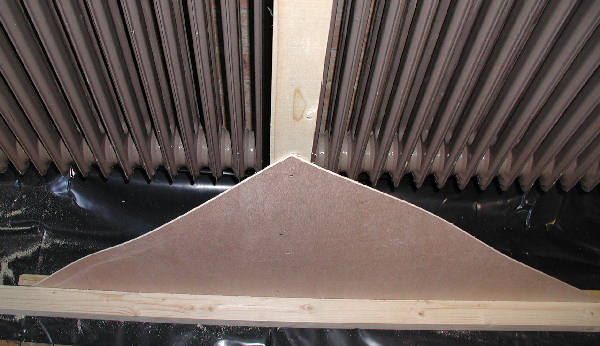| A PAINT FRAME |
This is the temporary paint frame I built for the smallest backcloths
I have ever been asked to paint... 12 ft by 9 ft.
It is made from 2" x 2" timber. (Rough sawn) with no fancy joints. The
thing is held rigid and with correct right angles by the use of the 4mm.
plywood triangles. I cut these from the corners of a bought 8' x 4' sheet
so knew they were right angles. |
|
The frame is erected in the corner of the assembly hall. Hence
the radiator (Which I turned off) It is about a foot away from the wall.
2.5 litre. paint tin for scale. Not seen in this photo are two big brackets
at the top supporting it from the wall. Note the hardboard laid on the black
PVC. The PVC is there (of course) to stop me damaging the floor of the hall.
The hardboard is a trick I always do when painting a cloth. This enables
me to easily slide the step ladders back and forth across the cloth.
The struts pf wood are straight, although they look slightly bent in this
wide angle photo. |
|
A triangle of ply in situ in one of the corners. A very simple
half joint packed out with a length of 2" x 1".
Note also the piece of 2"
x 2" holding the frame bottom away from the wall. |
 |
Any supports in the middle are kept back from the main
frame so that when I drag the brush across the canvas it does not "catch"
on these. Note crude butt joints.
All these supports are good solid timbers, because once the canvas is
stretched and sealed it tightens like a drum, which would bend thinner
wood. |
|
| And here is the bottom centre back support. (with radiator).
Strange shot this - would make a good "guess what this is" competition. |
| A final thought. The UK scenic artists are the only ones
in Europe who paint backcloths in a vertical position. The rest of Europe
paint their cloths on the floor. |
On to stretching and sealing the canvas on this frame
>> |
<<Return to Q and A List.
Or << Return to list of stage sets |



